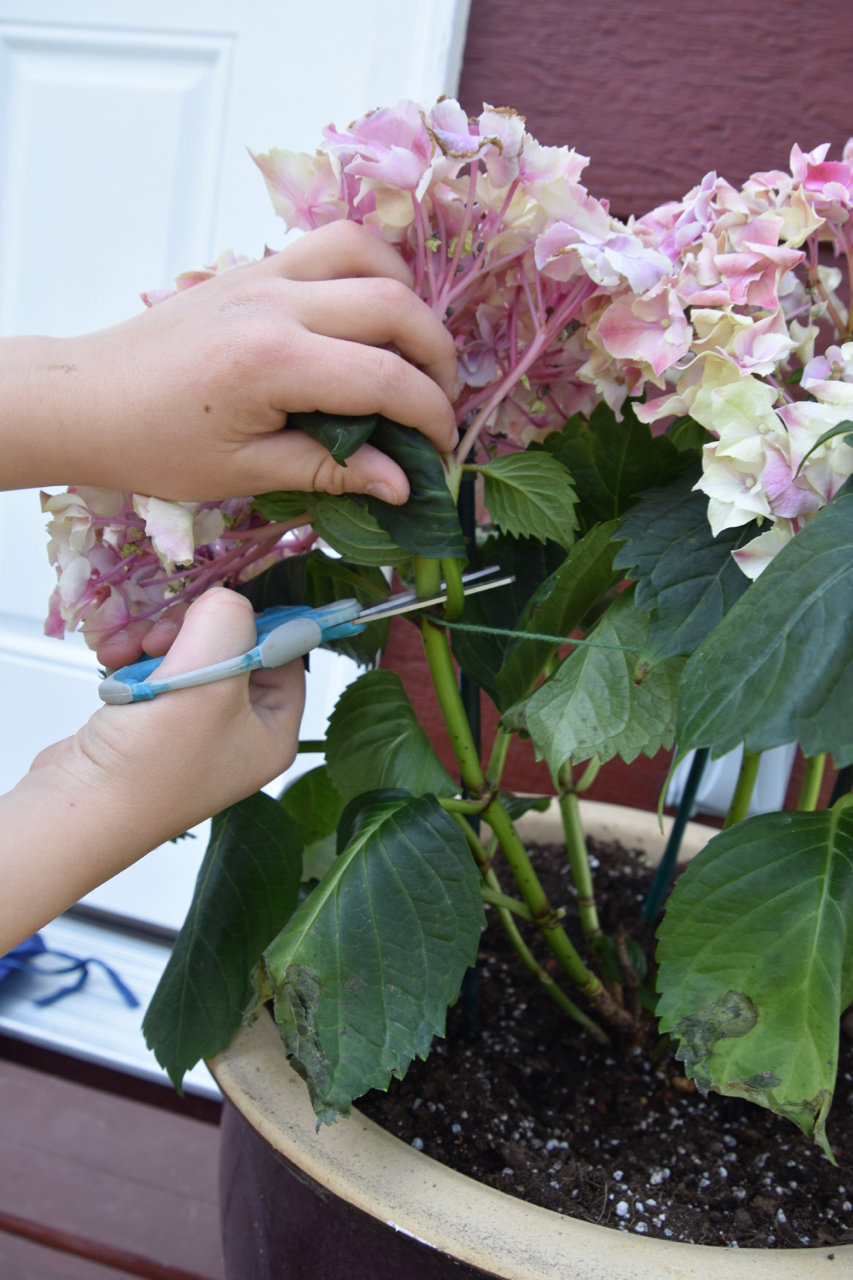Keeping your hydrangea producing throughout the season
To keep your hydrangea happy make sure it is well-watered. If it wilts on a regular basis, the stress will reduce the number of blooms. How much and how often mostly depends on your climate. To determine if water is needed, push your finger into the soil. If it feels dry a half inch below the surface, give the plant a good drink.
While hydrangeas bred specifically for containers typically grow extremely well in their given environment, if the summer is too hot and dry, it will practically shut them down until conditions change. That is major drawback of these particularly cultivars, although it’s still nice to have a hydrangea nearly anyone can grow. Stay ahead of the game by being vigilant on watering, and if it appears the sun is too much for them, move them or shade them as much as possible. If that doesn’t work, be patient. Sometimes, but not always, they’ll produce again when the conditions improve.
Pruning a hydrangea – photo by Amy Grisak
How to change the color of hydrangea blossoms
One of the amazing aspects of hydrangeas is how they can change the color of their blossoms depending on their soil acidity level. There are certain varieties of hydrangeas with pure white or lime green flowers, and those will not change in color. But for many other varieties, particularly the container cultivars, the blooms start out pink, but can turn different shades, including the true blue that is so difficult to find in the garden.
Developing the beautiful blue takes a bit of chemistry to accomplish. Pink flowers appear when the soil has a pH of 6.5 or higher. They’ll look more along a purplish hue when the level is between 5.5 – 6.5. For that gorgeous blue, aim for a pH of 5.5, or less.
To be truly scientific about it, take a pH measurement, which is easy enough to do using a simple kit from the local nursery, to see where your soil level looks on the scale. This will help you understand what and how much you need to add to achieve the desired effect.
For some gardeners, adding coffee grounds, peat moss, a sulfur amendment, and other organic materials to the soil is enough to give it a big enough acidic boost to develop the beautiful blues, but it often takes a much longer period of time since these materials do not assimilate rapidly.
A better method is to directly amend the acidity level by using a product containing aluminum sulfate, such as Garden Select™ from the makers of Osmocote. The beauty of Garden Select is it is as simple as the Osmocote fertilizer since you apply it and allow the soil chemistry to work its magic with the coated aluminum sulfate pellets that release the proper amount throughout the season. It is best applied before the plant sets buds, but you can start the process of changing the soil pH at any time of the season.
Another option for those who use a water soluble fertilizer is to use one specialized to boost the acidity level of the soil for plants such as hydrangea, azaleas, and some orchids. This needs to be applied during regular feedings every 7-10 days. The results are often good in many areas, although be aware that if you live in a region where the water is naturally alkaline, it might not drop the pH level as low as needed for the blue blooms. In this case, use a more neutral water source.
On the flip side, if you have naturally acidic soil and wish to have pink flowers, choose a soil amendment to increase the alkalinity. There are a number of possibilities, including basic lime, that will do the trick.
Keep in mind that while it seems like magic to be able to turn a flower a different color, it doesn’t happen overnight. It can take weeks, and in some cases, an entire season to be able to tweak the soil to achieve the color you want. Fortunately, hydrangeas are perennials so you have the time to create the color you love.





